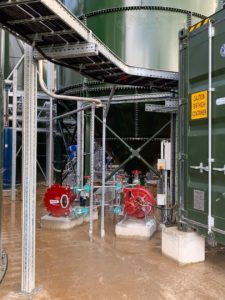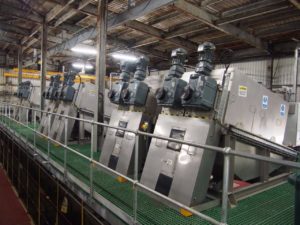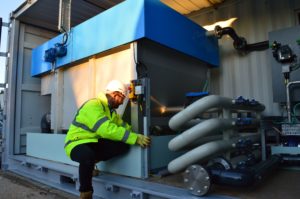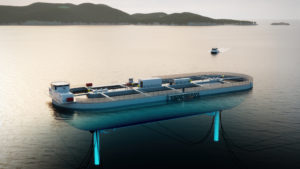Weltec Optimises Wastewater Plants
In the future, the anaerobic fermentation and utilisation of sludge from wastewater plants will play an increasingly important role. To ensure an economically and ecologically sustainable solution, more and more municipalities decide to optimise the energy potential of their sewage plants. For a plant dimension of 20,000 to 30,000 PE (population equivalent), biogas plant manufacturer Weltec Biopower from Lower Saxony, Germany, offers an attractive retrofit package for anaerobic sludge treatment.
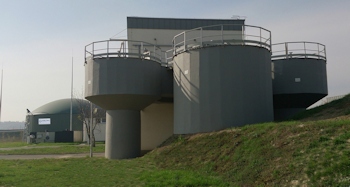
For a plant dimension of 20,000 to 30,000 PE (population equivalent), Weltec offers an attractive retrofit package for anaerobic sludge treatment. (Image: Weltec Biopower)
Sustainable sludge treatment strategies are vital – also in view of the fact that many countries plan to discontinue the use of sludge as fertiliser. In some countries, this plan has already been enforced. Moreover the energy potential of this resource and the part that remains unused in sewage plant operation are still high. These framework conditions as well as rising energy prices amplify the need for municipalities to act.
For this reason, Weltec Biopower has developed an optimised anaerobic sludge treatment approach: Following the preliminary treatment of the wastewater and the removal of pollutants, anaerobic sludge fermentation – during which the sewage gas develops – is the process step that offers a particularly high energy utilisation and saving potential for the sewage plant.
"With this possibility to generate power for their own consumption, sewage plants can cut their energy costs by up to a quarter", says Hajo Schierhold, Sales Manager of Weltec Biopower. "Additionally, the heat produced by the cogeneration unit can be used directly and inexpensively to heat buildings and the digester in order to accelerate the entire fermentation process", adds Schierhold.
The fermentation also reduces the amount of sludge, which ultimately results in lower sludge disposal costs. "This reduces the sewage plant operating costs even more", explains Hajo Schierhold. Apart from the microeconomic benefit, a macroeconomic benefit also arises for the eco-balance: The reduction helps avoid harmful greenhouse gas emissions that diffuse into the atmosphere during aerobic sludge stabilisation.
However, to benefit from these advantages, appropriate plant technology must be implemented: A suitable anaerobic unit is required for sludge stabilisation under consideration of the properties of the sludge. This unit must be equipped with a special roof for intermediate storage of the fermentation gas as an energy source for the cogeneration (CHP) supply.
The modular digesters of Weltec Biopower are especially suitable for this purpose: In these mature stainless-steel bio-reactors, harmful carbon compounds are efficiently converted to methane by means of microbiological decomposition processes in the absence of air. "In view of the mounting energy prices and the advantages of a reduced sludge volume, the upgrade of sewage plants with a view to utilisation of fermentation gas for energy purposes is especially attractive for the range of 10,000 to 30,000 PE", says Hajo Schierhold. Particularly for a population equivalent of 20,000, the plants have the highest share of own energy consumption and thus the highest saving potential.
Obviously, this news has already spread to Hungary, France and Finland: In these countries, operators have already invested in the Weltec package comprising specially designed fermenters, high-quality components and optimised energy extraction processes. Moreover, investors appear to be especially impressed by the extensive biogas technology expertise, from the ground slab to digester technology to CHP systems.
Source: Weltec Biopower GmbH


